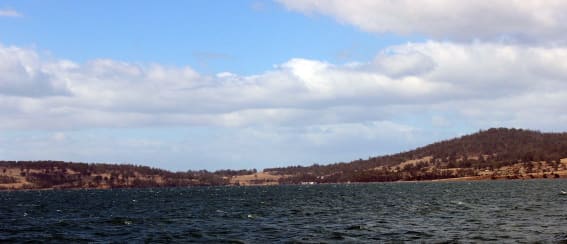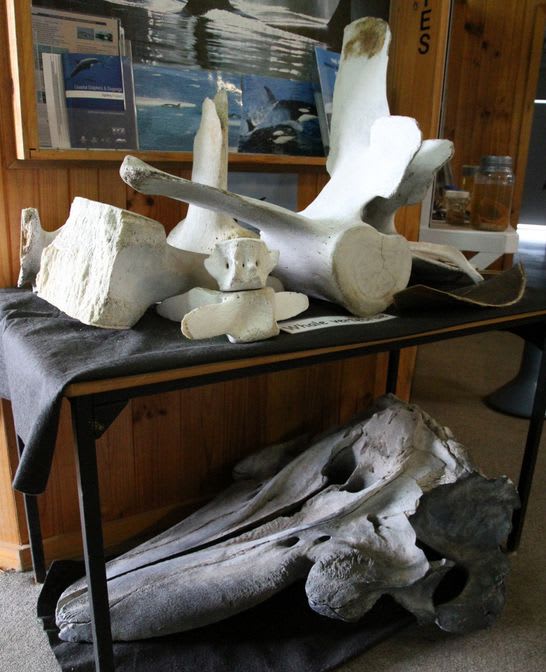Bruny Island TAS Bush Blitz | February 2016
Today I got to spend the day with Fiona, the algae scientist and Kirrily, the small marine creatures expert as well as Claire and Andrew from the Marine Discovery Centre, Woodbridge.
We started our day by boarding the Discovery Centre boat at the jetty and then we made our way north in the D’Entrecasteaux Channel towards the mouth of the Derwent River. We didn’t go as far as the river mouth though because we were dredging for marine animals and we had a permit to only dredge outside of marine parks so we had to be really careful about where we dredged. Not everyone can just drop a net onto the seabed and dredge the bottom. You have to have a really good reason for dredging because this action obviously churns up the ocean floor and disturbs habitats. We had a permit to complete 'no more than' 20 dredges over two days and we ended up completing 13 of those.

The reason why we were dredging is that the scientists were interested in finding out what algae is growing and what animals are living at different depths in different parts of the channel. This enables them to not only record the diversity of the creatures and plants but also to keep an eye on whether things are changing. As you know, many things can change marine habitats: temperature change due to climate change; fish farms being established; storm water run off from new properties near rivers and streams; the accidental introduction of invasive species and over fishing just to name a few. In the D’Entrecasteaux Channel any of these events could change or could be changing the number and variety of plants and animals – it is the scientists’ job to find out if this is so.
We used two dredges today. The main one was a weighted open net that we let down on a rope and pulley system that, when locked into place on the channel floor, followed the slow moving boat and picked up whatever came in its path. The other dredge was only used once and this one was a fine mesh net that was suspended just below the surface of the water. This net was used to pick up the plankton. Both dredges revealed a wide variety of marine life.

Some of the creatures we found were: six different small fish species; an octopus; many sea sponges; sea hares; tiny spotted rock lobsters; tiny shrimp; sea squirts; about seven varieties of crab including a number of hermit crabs of varying size; sea snails; colonial ascidians; bryozoans; bristle worms; gastropods; bivalves; chitons; barnacles and sea anemones. We also collected many samples of algae from each of the three groups: red, green and brown algae.
The bottom of the channel changes from dark grey silt to sand and some of the dredges were filled with fine grey mud. It was fun sifting through the mud to find our treasures. I felt almost like an archaeologist!

I learned that sea squirts or Ascidians start life as chordates or animals with a dorsal nerve cord. They look kind of like tadpoles. Once they find a suitable anchor point, like a shell or rock, they bury their head into that object and the process begins, whereby the animal’s organs, head, fins etc are assumed into its body. It grows into a squirt with two openings – one for the ‘in’ and one for the ‘out’. Amazing hey?! These squishy balls begin life in the same way that humans do.
At the end of the day we had the opportunity to visit the Marine Discovery Centre. It is attached to the local school at Woodbridge and it is amazing. There are two teachers who look after the centre and teach there. They look after three big touch tanks as well as collections of sharks, lobsters, smaller fish, abalone and urchins. In the middle of the centre is a large swimming pool sized aquarium with a fence around it. This is where the larger fish are kept – the giant eel, Australian salmon, chessboard shark, trumpeter fish and many others. Students who come here can feed the fish from extendable rods at feeding time. We saw some magnified plankton projected onto a big screen and they looked sooo funny! The centre also has a whale bone gallery that contains any skeletal remains that have been found around the area. I took a photo of this especially for Ada, who asks lots of questions about whales!
We headed back to our dock by about 5:00pm very tired but very happy.
Tomorrow I’m heading out to find 'true bugs’ with Anna. Wish me luck!